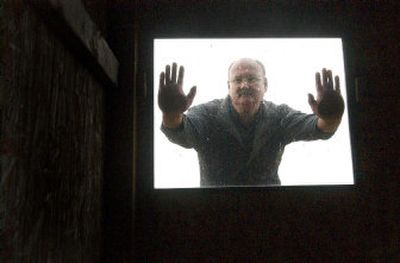Flirting with death

It’s not as if the name Death Valley is all that inviting.
So it’s ironic that, in his new book “Live! From Death Valley: Dispatches from America’s Low Point,” Cheney author John Soennichsen talks about his love for a place that the ancient Shoshones called “Tomesha” – or “Ground on Fire.”
“I think,” he writes, “my love affair with Death Valley began when I first experienced the vehement honesty of the place.”
Soennichsen (it’s pronounced Sonn-icks-son) will read from the book – which he describes as “part memoir and part adventure; part history lesson and part coming-of-age story” – tonight at 7:30 at Auntie’s Bookstore.
And when he’s done reading, he’ll likely have to tackle the obvious first question: Why would a Pacific Northwest writer write about Death Valley?
Easy answer to that one: He’s not a Northwest native.
In fact, the 52-year-old writer spent the first 25 years of his life living in Southern California, often just a four-hour drive from the place typically known as – and this comes straight from the National Park Service’s Web site – “one of the hottest places on the surface of the Earth with summer temperatures averaging well over 100 degrees Fahrenheit.”
Soennichsen first began visiting the place, he recalls, during Christmas vacation of 1965. It was during that time of supposed “liberation” that he and sister found themselves in the back seat of the family’s ‘62 Impala, headed toward “Land’s End.”
The draw was immediate. And, as he explains, he was a regular visitor until the late 1980s when, having moved to Cheney to take a job as a writer for Eastern Washington University, he could no longer drive there easily.
But the place stayed with him, both in his memories and in his trip diaries.
“I’d had a fifth-grade teacher who had gotten it ingrained in our heads to keep a journal, or notes, when we did things because we never knew whether we would need them or not,” Soennichsen says. “So I had been doing that all these years, keeping track of things, interesting conversations and what-not.”
He got a chance to do something with the material when, while studying for an MFA in creative writing at Eastern, he was required “to present a fairly lengthy nonfiction work” for his thesis.
“And I thought, ‘Now’s a good time to bring all those things out,’ ” Soennichsen says.
That was in 1994. He earned his MFA three years later. And then, because he got busy doing other stuff, everything went back in a drawer.
Eventually, though, Soennichsen decided that he should try to turn his thesis into an actual book.
Which was harder than you might imagine. He fought for years to find an agent who would actually do something for him. And when he did find one who could actually do something for him, his book ended up not at a New York-based publisher but at Seattle’s Sasquatch Books.
That, though, was fortuitous because Sasquatch – long known for its “Northwest Best Places” series – was evolving toward printing books that, as Soennichsen says, “were sort of travel-history-geology/philosophy/ memoir.”
Which is as good a description as any of “Live! From Death Valley.”
Soennichsen tells the history of the place (from the native tribes to the first white man to visit, William Manly). He gives geology lessons (“Desert pavement is usually dark in color, stained by a coating of clay particles and bacteria called rock varnish”). He provides lots of facts (“a million tourists visit Death Valley each year, coming and going along the 300 miles of paved roads in this 5,264-square-mile national park”).
And he buoys it all with his own reminiscences and experiences, such as the late June weekend he spent alone in the park “to experience the summer heat,” which hit a high of 122 degrees.
At 8 p.m., the temperature had dropped only a few degrees.
“I slept a few hours and awoke to a hazy sky,” Soennichsen wrote. “Rare summertime clouds had moved in and the temp had dropped. ‘If this keeps up,’ I thought to myself, ‘I might actually have to put on some clothes.’ “
Reviewing the book for the Los Angeles Times, Susan Reynolds wrote: “It’s fine, dry writing, deadpan. Soennichsen has an eye for the truly strange and a fascination for discovery (of self and landscape) not unlike those of the men and women who first stumbled across the desert in search of gold.”
For his part, Soennichsen says he had no “great message” that he wanted to pass on to readers. He does, however, want to stress how it’s possible to bond with a specific place.
“You can have a place that’s just completely devoid of people and yet you can, on a one-to-one basis, have a relationship with that landscape,” he says.
And, he adds, it’s important for humans, on occasion, to experience solitude.
“There are so many books out there about how we can all get along and relationships and how we can all work together as a community,” Soennichsen says. “Which is true, too, but I honestly think that everybody needs a good stint all by themselves.
“And what better place to go for that than Death Valley?”